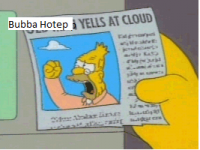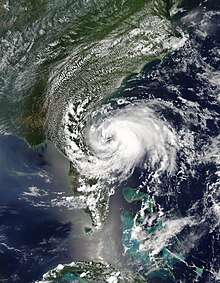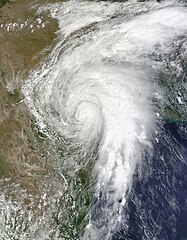Here's what the extended HRRR 00z run had in store for Texas, valid at 9 PM tomorrow. Shaded areas denote regions of strong updraft helicity, or where the model sees rotation. While a lot of the ingredients for a severe event are there, what shakes out in the end is pretty conditional, a la only a few switches need to be flipped for the severe potential to decrease markedly. That also means only a few switches need to be flipped for the potential to greatly increase as well.
NWS FWD put out another great discussion this evening, and noted this succinctly:
"Although raw model reflectivity may show a scary forecast radar setup across Central Texas in the afternoon, most of that convection will likely be elevated, posing mainly a hail threat, followed by damaging winds. If a storm is able to gain enough surface based instability, the strong near surface wind shear would imply a higher threat for tornado development."Still, an elevated thunderstorm is still a thunderstorm, and thunderstorms are dangerous. The main limiter is low instability in the low-levels of the atmosphere. You can see this very clearly on the
00z sounding from Dallas/Fort Worth (30 kB, Storm Prediction Center) as the warm cap that sticks out at about 800 mb. Aside from that, MUCAPE is pretty high, along with shear and mid-level lapse rates. According to the models, it will likely be cloudy for much of East Texas throughout the day tomorrow, limiting daytime heating, but the cyclonic flow around the developing low will probably help to advect some warmer Gulf/Mexican air from the south towards Central and South Texas.
Severe weather notwithstanding, there's a risk for flooding, particularly in the Metroplex and East Texas. Precipitable water values will be around 1.5", and NWS FWD notes widespread 1-3" totals with localized 4"+ which could lead to flash flooding from both a combination of showers ahead of the main modeled line and the squall line itself. WPC QPF 1-3 day totals indicate ~2" for Austin, ~1" for San Antonio, ~1.5" for the Metroplex, and ~2" for Houston. Keep in mind these are forecast areal averages over a 400 km^2 region.
292 KB. Source: Pivotal Weather

 The posts in this forum are NOT official forecast and should not be used as such. They are just the opinion of the poster and may or may not be backed by sound meteorological data. They are NOT endorsed by any professional institution or
The posts in this forum are NOT official forecast and should not be used as such. They are just the opinion of the poster and may or may not be backed by sound meteorological data. They are NOT endorsed by any professional institution or 























